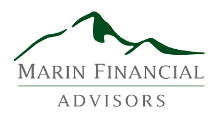The US Stock market continued to deliver strong gains this past quarter with the broader index (as measured by the S&P 500) gaining almost 14% year to date through June 30th and ahead almost 3% for the quarter. As it happened, most of the other asset classes we invest in were not invited to the party and generally lost ground over the past three months. Some of the safest investments were hardest hit such as bonds – which lost value as interest rates rose.
 Treasury Inflation Protected Securities, also known as TIPS, lost over 7% for the quarter, the majority of which occurred in the month of June. TIPS are government bonds whose returns are one part interest and one part the rate of inflation. Fixed interest payments from bonds buy less over time due to inflation, so Treasury Bonds whose return increases with inflation have become a prudent inflation hedge. While prices for TIPs appear to have gotten ahead of themselves due to the current tame inflation environment, they were a roughly breakeven investment over the last year.
Treasury Inflation Protected Securities, also known as TIPS, lost over 7% for the quarter, the majority of which occurred in the month of June. TIPS are government bonds whose returns are one part interest and one part the rate of inflation. Fixed interest payments from bonds buy less over time due to inflation, so Treasury Bonds whose return increases with inflation have become a prudent inflation hedge. While prices for TIPs appear to have gotten ahead of themselves due to the current tame inflation environment, they were a roughly breakeven investment over the last year.
To use a nautical metaphor, bonds are supposed to serve as ballast in our portfolios. A sailor might dislike the extra weight as the boat slows down in normal conditions but the sand bags get new respect if they help to keep the craft from capsizing when the weather gets rough. The discipline of keeping part of a balanced portfolio in bonds affords us the opportunity to buy risky assets (stocks) cheaply when they fall in price.
In addition to balancing the risk of stocks, bonds have spoiled their owners with above average returns for the past 30 years as they were aided by a tailwind of falling interest rates. In addition to making regular interest payments, bonds generally rose in value as interest rates fell. With the current Federal Funds Rate1 of 0.11% as an indicator, it is easy to see why rates can’t go much lower. Looking ahead, bond interest rates are low and investors fear that rising interest rates could erode bond prices.
We use bonds in a balanced portfolio to reduce risk, not to reach for return. Trying to add extra return by investing for higher yield means taking on more risk. The ultimate law of investing gravity – “Risk and Return are related” – applies equally to bonds. During the turmoil of 2008 High Yield (aka “Junk” or low credit quality) bonds declined almost as much as the Stock Market losing 32% vs. 37% for the S&P 5002. We control our bond risk by keeping maturities short and our average credit quality high. As always, we expect most of our long term returns from the global stock market.
And on another note…
Marin County Pension Board selects Dave Shore as Trustee. We received a nice honor July 9th when Dave Shore was appointed by our local Board of Supervisors to serve a 3 year term as a trustee of the County Employees Pension Plan. The nine member board oversees 9 local government and agency retirement plans with assets of $1.7 Billion and over 5,000 participants. In addition to helping secure government retiree’s pension payments, Dave looks forward to the learning that comes from having a bird’s eye view on a large institutional investment process. Community service is a part of our culture. Tim is a past president of the San Francisco Chapter of the Financial Planning Association.
Additionally, our resident 401(k) specialist Kevin Root and coauthor Patrick Lack, Ph.D (Assistant Professor of Finance at Eastern Illinois University) will be submitting two papers they recently finished at the Academy of Financial Services Conference this October in Chicago. One paper explores investment returns of 401(k) participants; the other dissects Target Date Funds.
We look forward to discussing your investments or touching base on other topics that affect your financial well being.

